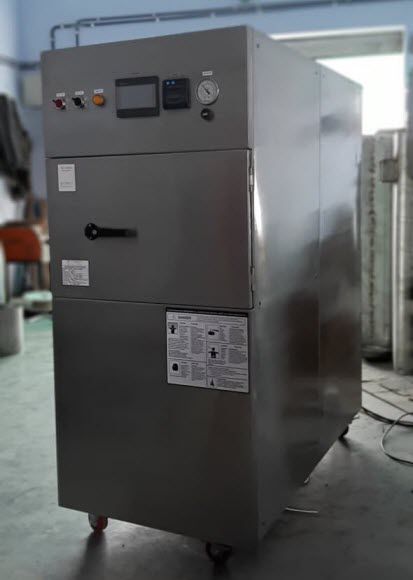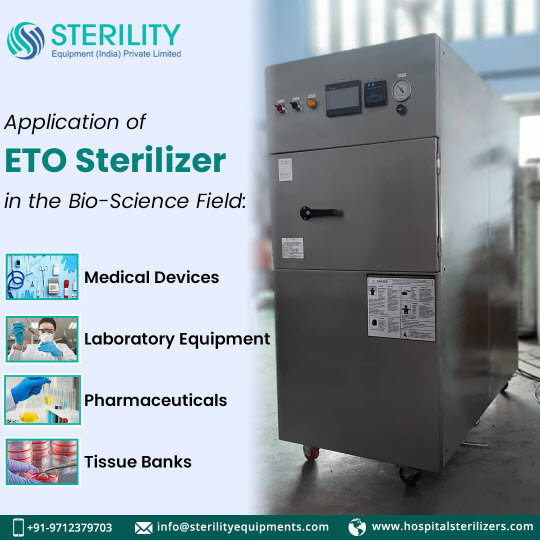ETO Sterilizers, also known as Ethylene Oxide Sterilizers, hold immense significance in the USA pharmaceutical industry. These sterilizers play a vital role in ensuring product safety and efficacy by effectively eliminating harmful microorganisms from medical devices and pharmaceutical products.
ETO sterilizers employ ethylene oxide gas, a powerful sterilizing agent, to penetrate the packaging materials and reach all surfaces of the products. The gas works by damaging the DNA and proteins of microorganisms, rendering them unable to multiply and ensuring their complete eradication. This meticulous process guarantees that pharmaceutical products remain uncontaminated and safe for use by patients.
Product safety and efficacy are paramount in the pharmaceutical sector. ETO sterilizers play a crucial role in maintaining these standards by eradicating potential contaminants. By eliminating harmful microorganisms, ETO sterilization ensures that pharmaceutical products are safe for patients and meet stringent quality requirements. This fosters trust in the product’s performance and safety among healthcare professionals and consumers alike.
Complying with FDA Regulations for ETO Sterilization
Ensuring compliance with FDA regulations regarding ETO sterilization is of utmost importance for pharmaceutical companies. Navigating this complex regulatory landscape requires a thorough understanding of the key guidelines and best practices.
The FDA has established stringent guidelines for ETO sterilization processes to ensure the safety and efficacy of pharmaceutical products. These guidelines encompass various aspects, including sterilization parameters, equipment validation, and documentation practices. Pharmaceutical companies must familiarize themselves with these regulations to implement ETO sterilization successfully.
One of the core requirements set by the FDA is the validation of sterilization processes. Pharmaceutical companies must conduct comprehensive validation studies to demonstrate that their ETO sterilization method consistently achieves the desired level of sterility. These studies should cover factors such as exposure time, temperature, gas concentration, and product compatibility.
FDA regulations also emphasize the importance of personnel training and safety measures during ETO sterilization procedures. Proper training ensures that operators understand the sterilization process and follow the established protocols accurately. Companies must also provide the necessary personal protective equipment (PPE) to protect employees from potential chemical exposure during the sterilization process.

Importance of Validated Sterilization Processes
Validated sterilization processes hold immense significance in the pharmaceutical industry, as they are vital for maintaining product integrity and ensuring patient safety. Validated sterilization processes ensure that pharmaceutical products are free from harmful microorganisms, such as bacteria, viruses, and fungi. Sterilization eliminates potential contaminants that could compromise the product’s safety and efficacy. By validating the sterilization method, companies can confidently guarantee the delivery of safe and effective products to patients.
Validation provides scientific evidence that a specific sterilization method consistently delivers the desired level of sterility. This ensures that each batch of pharmaceutical products undergoes a reliable and reproducible sterilization process, reducing the risk of batch-to-batch variability.
Patient safety is at the core of pharmaceutical manufacturing. Validated sterilization processes play a crucial role in protecting patients from infections and other health risks associated with contaminated products. Prioritizing validation contributes to overall public health by ensuring the delivery of safe medications and medical devices.
Addressing Safety Concerns with ETO Sterilizers
Safety is of paramount importance when working with ETO sterilizers in pharmaceutical companies. To protect workers from potential hazards and mitigate chemical exposure risks, comprehensive safety measures must be adopted. Employees should undergo thorough training on the safe handling of ETO, understanding its properties and associated risks. Personal Protective Equipment (PPE), including safety goggles, gloves, lab coats, and respiratory protection, should be provided and consistently used. Engineering controls, such as local exhaust ventilation systems, should be implemented to minimize ethylene oxide gas concentrations in the working environment.
Regular monitoring and gas detection systems are essential to promptly identify any gas leaks or elevated gas levels. Access to ETO sterilization areas should be restricted to authorized personnel only, and emergency protocols must be established and practiced through regular safety drills. Proper handling, storage, and routine inspections of ETO cylinders are crucial to prevent accidents. Continuous safety evaluation and feedback from employees help identify areas for improvement and promote a culture of safety in the workplace. By diligently adhering to these safety measures, pharmaceutical companies can ensure a secure working environment and protect their workers’ well-being.
Ensuring Product Compatibility with ETO Sterilization
Ensuring product compatibility with ETO sterilization is a crucial consideration for pharmaceutical companies to uphold product integrity throughout the sterilization process. ETO sterilization has the potential to impact product materials and packaging, necessitating careful measures to ensure product safety and efficacy. To achieve product compatibility, companies should select and validate materials for pharmaceutical products and packaging, ensuring they can withstand the sterilization process without adverse effects. Designing packaging with ETO sterilization in mind, optimizing process parameters, and implementing post-sterilization aeration are essential steps. Thorough quality control testing and continuous improvement further enhance product compatibility, fostering consumer trust and the delivery of high-quality pharmaceutical products. Detailed monitoring and record-keeping enable traceability and compliance with regulatory requirements, ultimately reinforcing the commitment to maintaining product safety and efficacy.






